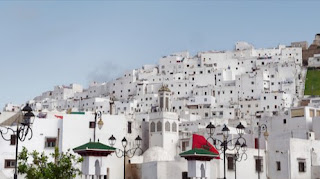Tetouan, often known as the white dove, is a city in northern Morocco of Berber origin that means "water springs" in this language. It lies 70 kilometers from Tangier and 40 kilometers from Ceuta, on the Haouz plain, on the side of Djébel Dersa.
Tourist Attractions
Tétouan has a certain allure that is difficult to put into words. It is undoubtedly one of the cities in the country that has the most allure for many residents since it is quite vibrant and the environment attracts a large number of tourists. It retains its own character, with traces of its history and a frantic pace that can be felt on every street corner.
The city is built of the ancient medina, which is a UNESCO World Heritage Site, and the Ensanche Espaol area, which is regarded the greatest colonial quarter in the world.
The tourist-drawing Avenue Mohammed V is a tangle of streets, alleyways, little squares, niches, doorways, and windows. Take a stroll around the medina, stop for a cup of tea at one of the little cafés, or strike up a conversation with the locals. Allow yourself to wander the streets and become lost.
There are three sections to the medina: Andalusian, Jewish, and Berber.
Suq el Hot Square, the medina's beating heart, is dominated by the Almandari Kasbah, a strange location where many veiled women sell the city's traditional aprons.
You should also go to the Place du Feddan, which is a lovely spot where the royal palace is located. The zaouas (Muslim schools) Sidi Abdelá el Hach and Sidi Ali Ben Aisa are located near to the palace. There are cafeterias and businesses on this square, which leads to the Jewish district.
The Jewish neighborhood, with its magnificent buildings and the ancient Queen Victoria Theater, is well worth a visit.
Don't forget to take a stroll down Avenue Mohammed V, a lively pedestrian boulevard at night. Cafeterias, "locutorios" (places with telephone booths), restaurants, tourist stores, and street sellers abound. You'll discover secondhand book dealers in the lower portion of the street selling a broad selection of books in a number of languages, and then you'll arrive at the royal palace.
This boulevard is part of the Spanish quarter, also known as Ensanche, which was erected to finish the medina under the protectorate.
















0 Comments